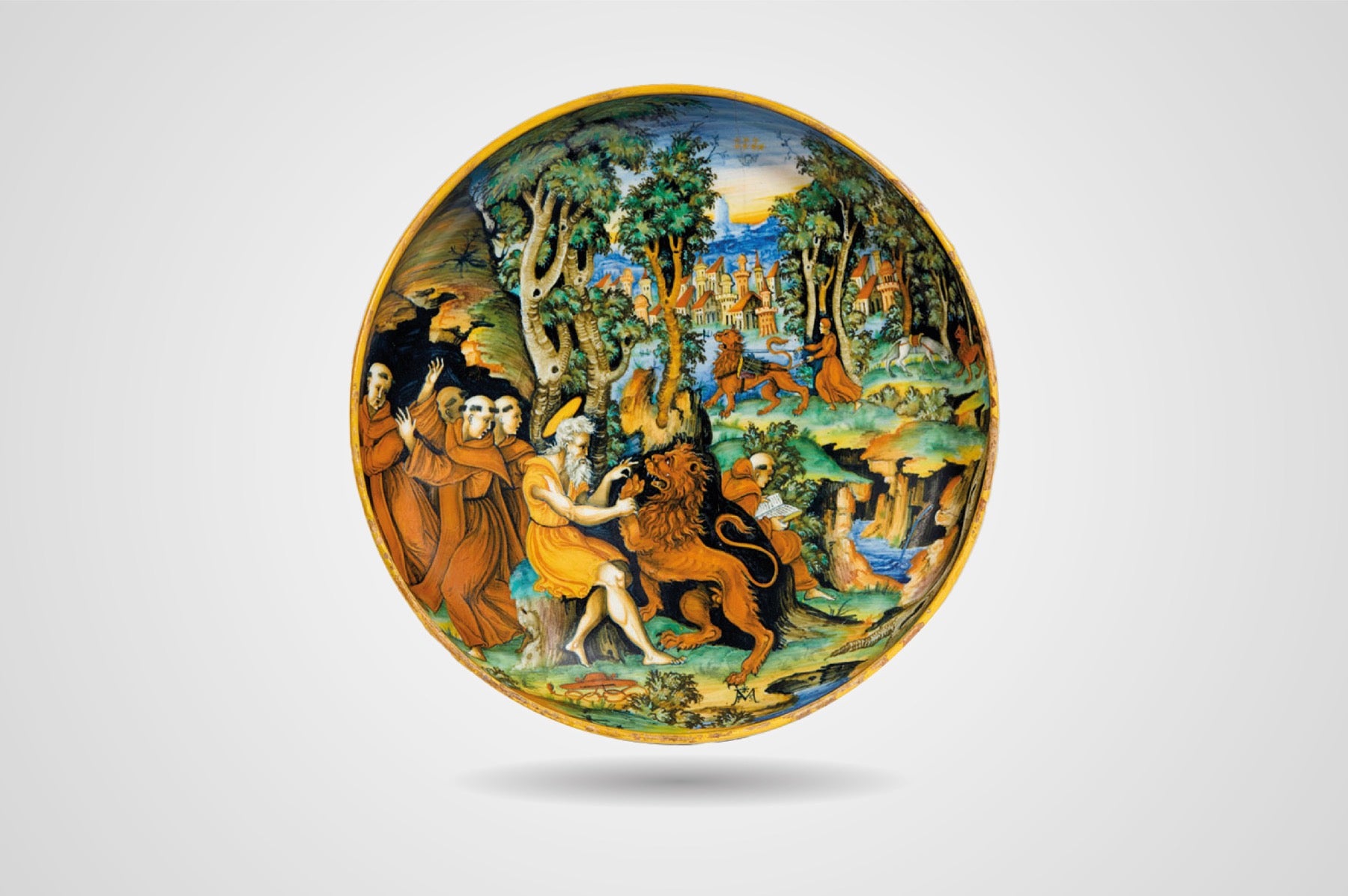
Watchmaking is definitely an art that is centuries old. However, some brands have only recently begun experimenting with the use of ceramic in their timepieces.
Still, ceramics has 16,000 years of history. Its origin can be found in the peoples of the Sahara and Japan. From these places it reached Europe in the third millennium BC, when the Greeks gave the name of "Kéramos" to this compound of clay, feldspar, silica, iron oxides, quartz and alumina.
Ceramic processing may vary according to the composition of the material itself. In the artistic field, the best results are obtained thanks to the use of a particular clay called kaolin. The latter, combined with feldspar and silica, gives rise to porcelain, the valuable white ceramic that was discovered by Chinese artisans in the eighth century. It reached Europe only after several centuries through to the silk road.

Coppa, San Girolamo and the lion, National Gallery of the Marche
In the Renaissance the most renowned ceramic workshops appeared in central Italy. However, it was not until the 18th century that the unrivalled techniques used by Chinese artisans were introduced into Europe. This was made possible by the experiments carried out by Baron Ehrenfried Walther von Tschirnhaus of Saxony and the alchemist Johann Friedrich Böttger.
It was thanks to trade relations with Central Europe that the Vezzi workshop, opened in Venice in 1720, succeeded in producing top quality porcelain in Italy as well. This art also relied on the expertise deriving from the flourishing glass industry.
CERAMICS IN WATCHMAKING
Ceramic has some properties that make it appealing for components that require resistance to high temperatures or scratches, but also a low weight.
The need for a material to make watches that are lighter and more wear-resistant than steel has attracted the attention of the watchmaking industry. The pioneers of this research were, starting from the 1960s, Rado, Omega and IWC. The first initially focused on tungsten, with the introduction of Diastar. A few years later Omega devised a mixture of ceramic and metal, called "cermet". It was in 1986 that IWC introduced the first true ceramic case, with the Da Vinci ref. 3755. In the same year Rado launched the Integral collection, in which case and strap are entirely made of ceramic.

The other component that benefits from the use of particularly hard materials is certainly the bezel of diving watches. The first watchmaker to introduce it was Rolex in 2005 on the GMT-Master II.
The bezel is the element of the case most subject to wear, and being the characteristic component of "divers", smears and scratches immediately catch the eye and make a watch look older than it actually is.
NEREIDE CERAMICA
Using ceramic for the bezel allows the watch to maintain an "ageless" look for a long time. This was the main aim we wanted to achieve with the introduction of Nereide Ceramica, a diving watch whose main technical characteristics are summarized below:
- Swiss Made Sellita SW200-1 movement
- Waterproof up to 200 meters
- 316L stainless steel case
- Ceramic bezel

Given its peculiar hardness and resistance to high temperatures, ceramic involves a complex processing that occurs through sintering, i.e. through the consolidation of the ceramic powder through compression and firing at high temperatures. Once the rough shape is obtained, the indexes are laser engraved and the surface is finished with a diamond wheel to obtain a perfectly polished surface, which embellishes the watch thanks to the clear reflectionstypical of ceramic.
The ceramic bezel takes advantage of another exceptional property of the material; it is immune to the discoloration that affects the most common aluminum and bakelite bezels, whose paint deteriorates inexorably due to exposure to sunlight.

Nereide Ceramica, initially available in 250 units, enriches our line of watches - already inaugurated with the Tungsten edition - that expresses our know-how in the use of refined or peculiar materials.
If you are interested in this soon to be released model, please keep following us. Click below and talk to our team for more information:













